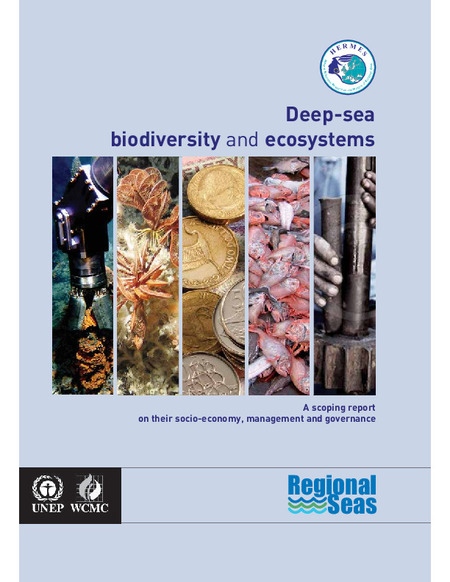| dc.description | The deep sea is the oldest and largest biome on Earth, yet we have little knowledge of the ecosystems and processes in these dark, hidden depths. Only in the last two decades have new technologies enabled scientists to start exploring this last frontier – and their discoveries are fascinating but alarming: the deep sea is teeming with life but is already showing clear signs of anthropogenic impacts despite its remoteness. Many vulnerable deep-sea habitats and communities are being destroyed by fishing and are under threat from increasing exploitation of their mineral and living resources. Since 2003, the protection, conservation and sustainable use of habitats, ecosystems and biodiversity in the deep sea and high seas have been on the agenda of international meetings. However, our knowledge is insufficient, and the existing governance and management systems are inadequate, to develop, implement and enforce concerted, effective action. Deep-sea biodiversity and ecosystems responds to key questions, including: where do we find vulnerable deep sea and high sea ecosystems, what are the goods and services they provide, and how are they affected or threatened by existing or emerging human activities and climate change. Deep-sea biodiversity and ecosystems scopes new ways and perspectives for answering these questions by applying modern methods and concepts used in the context of the Millennium Ecosystem Assessment. With input from leading experts, the report highlights gaps in socio-economic and governance knowledge, analyses shortcomings in assessment methodologies and valuation concepts, and identifies research needs. This results in strong arguments for urgent action to protect and conserve the deep waters, seabed, and high seas, and for the governance and sustainable management of human activities impacting on them. The deep sea is of crucial importance for life on Earth - we have to stop irreversible damages before it is too late. | |


